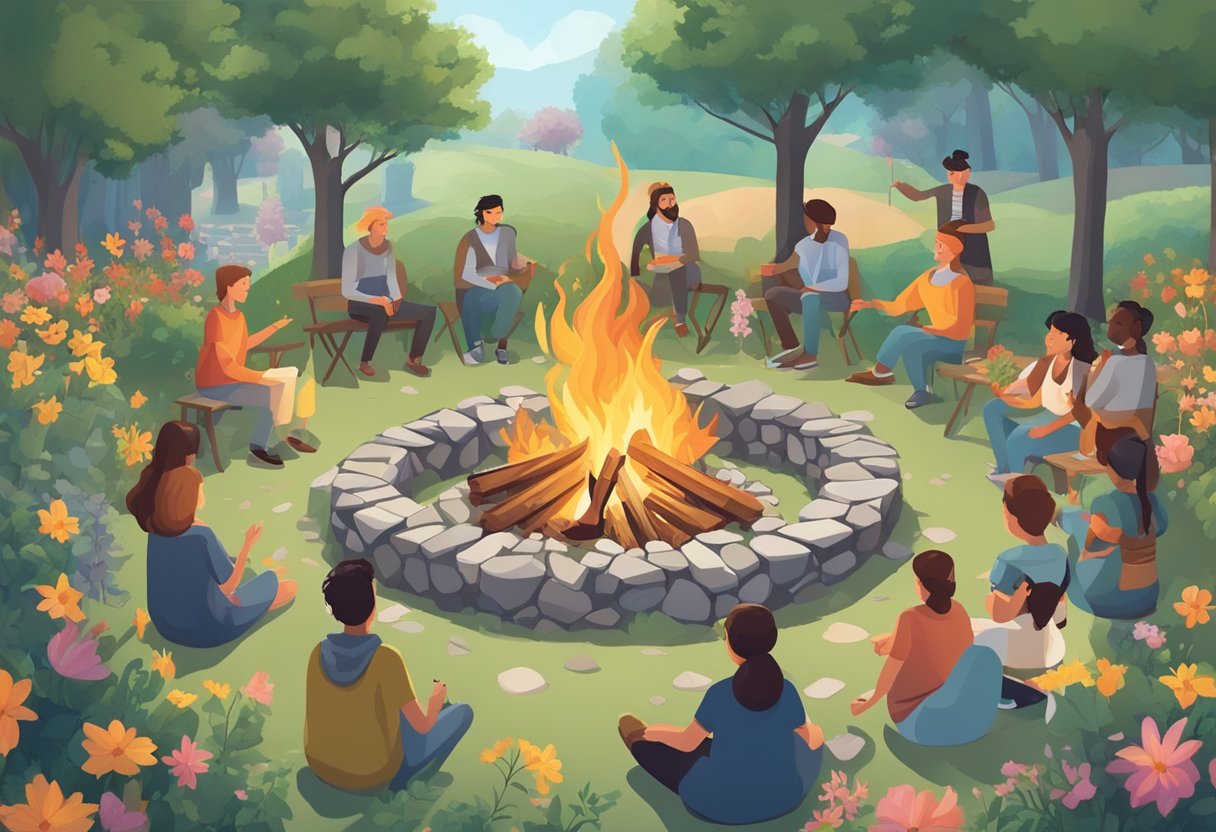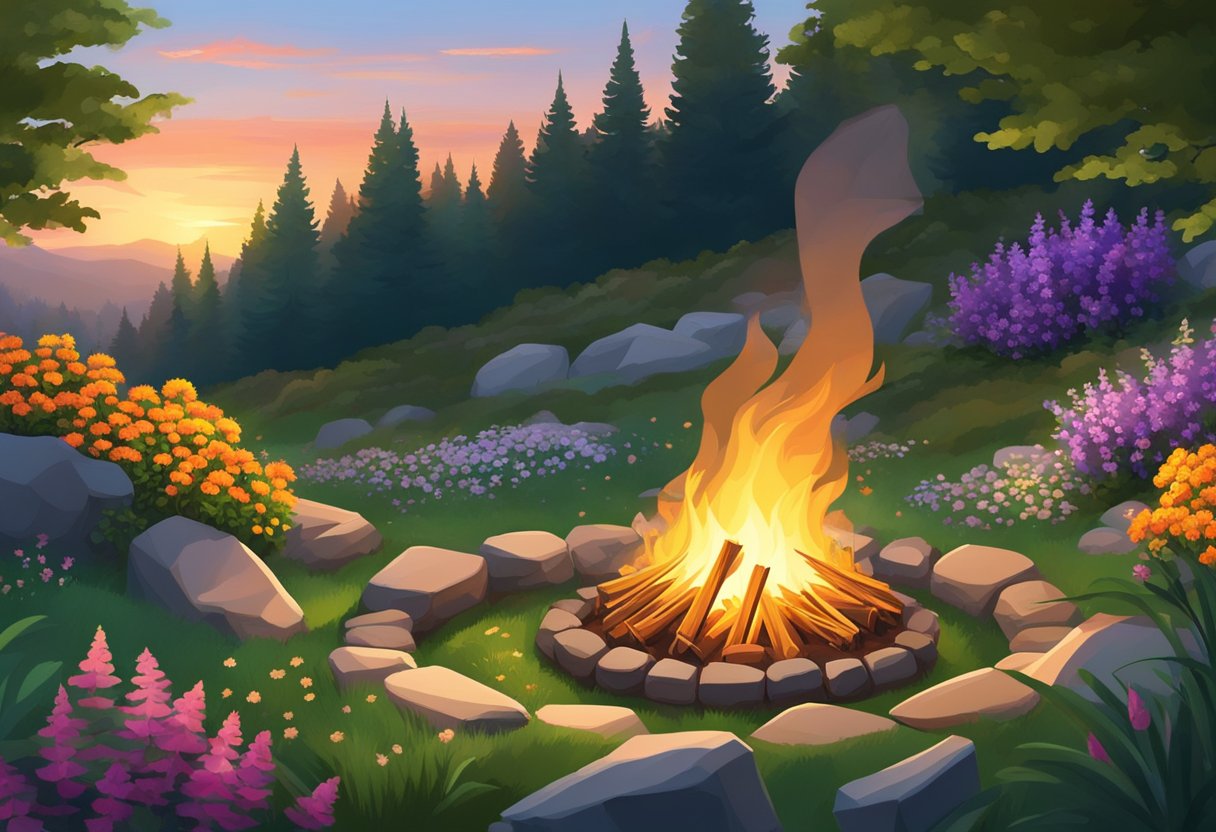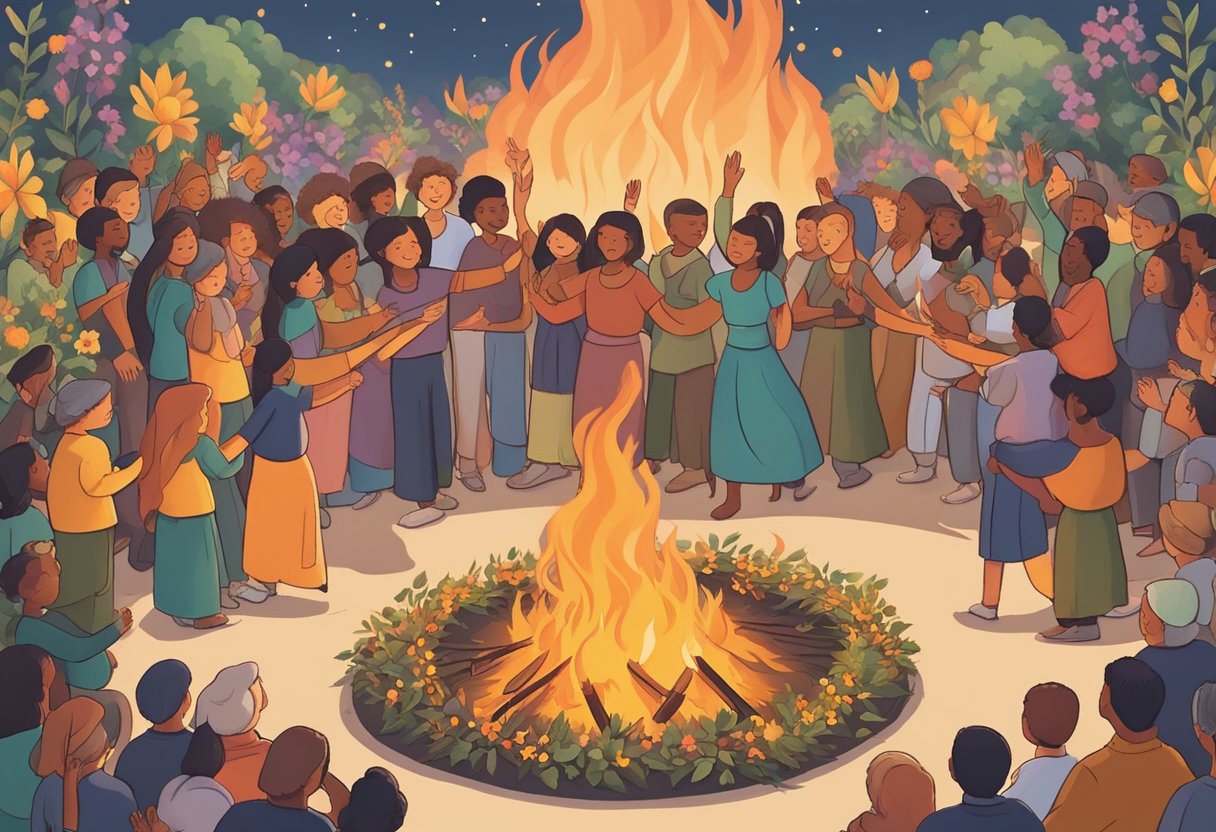Litha 2024; Litha, also known as Midsummer, is a celebration of the summer solstice and one of the eight festivals in the Wiccan calendar. This ancient pagan holiday honors the longest day of the year and the power of the sun. It is a time to celebrate the sun’s peak and ask for a rich harvest. Litha is celebrated on June 20th in the Northern Hemisphere and December 20th in the Southern Hemisphere.

The origins of Litha can be traced back to the ancient Celts who celebrated the solstice with bonfires, feasts, and dancing. The holiday was later adopted by the Germanic and Scandinavian peoples who honored the god Baldur and the goddess Freya. Today, Litha is celebrated by modern pagans and Wiccans around the world who incorporate traditional rituals and customs into their observances.
As Litha 2024 approaches, many people are preparing to celebrate this special day. From traditional bonfires and feasts to modern rituals and customs, there are many ways to observe Litha and honor the power of the sun. Whether you are a seasoned practitioner or a curious beginner, there are many resources available to help you prepare for this ancient pagan holiday.
History of Litha
Litha is a pagan holiday that celebrates the summer solstice, which is the longest day of the year. It is one of the eight sabbats that make up the Wheel of the Year. The holiday is also known as Midsummer Night, and it has been celebrated in some fashion since ancient times.
Origins of Litha
The origins of Litha are rooted in pagan traditions that date back to pre-Christian times. The holiday was originally celebrated by the Celts, who believed that the sun was a powerful god that controlled the seasons. They celebrated the summer solstice as a time of fertility, growth, and abundance.
The name “Litha” is believed to have come from the Anglo-Saxon word “lith,” which means “gentle” or “navigable.” This likely refers to the calm and peaceful nature of the summer solstice, which was seen as a time of rest and relaxation after the hard work of planting and harvesting crops.
Evolution of Celebrations
Over time, the celebration of Litha has evolved to include a wide range of traditions and customs. In some traditions, Litha is a time at which there is a battle between light and dark. The Oak King is seen as the ruler of the year between winter solstice and summer solstice, and the Holly King from summer to winter. At each solstice, they battle for power, and while the Oak King may be in charge of things at the beginning of June, by the end of the month, the Holly King will have taken over.
Today, Litha is celebrated by pagans and Wiccans around the world. It is a time to honor the sun, the earth, and the natural world. Many people celebrate by holding outdoor rituals, lighting bonfires, and decorating their homes with flowers and other symbols of summer.
Overall, the history of Litha is a rich and complex one that reflects the deep connection between humans and the natural world. Whether you are a pagan, a Wiccan, or simply someone who loves nature, Litha is a time to celebrate the beauty and abundance of the summer season.
Significance of Litha
Litha is a significant festival in the Wiccan and Pagan communities, marking the summer solstice in the Northern Hemisphere. It falls on June 20th in 2024 and is a time of celebration and reflection. This section will explore the solar phenomena and cultural impact of Litha.
Solar Phenomena
Litha is the longest day of the year, with the sun at its highest point in the sky. It marks the beginning of summer and the midpoint of the year. The festival celebrates the power of the sun and the abundance of life that it brings. It is a time to connect with nature and embrace the warmth and vitality of the season.
Cultural Impact
Litha has been celebrated for centuries in various cultures around the world. In Scandinavia, it is known as Midsummer’s Eve and is a time of feasting, dancing, and bonfires. In ancient Greece, it was a time to honor the god Apollo and the goddess Athena. In modern times, Litha is celebrated by Wiccans and Pagans as one of the eight Sabbats of the Wheel of the Year.
During Litha, many people perform rituals to honor the sun and the earth. They may create altars with symbols of the season, such as flowers, fruit, and herbs. They may also perform spells for abundance, growth, and prosperity. Litha is a time to connect with the natural world and celebrate the cycles of life and death.
Overall, Litha is a time of joy and celebration, marking the turning point of the year and the power of the sun. It is a time to honor nature and embrace the warmth and vitality of the season.
Litha 2024 Date and Astronomy
Litha 2024, also known as the Summer Solstice, will occur on June 20th in the Northern Hemisphere. It is the longest day of the year and marks the beginning of summer. In the Southern Hemisphere, Litha 2024 will occur on December 20th and marks the beginning of winter.
During Litha, the sun reaches its highest point in the sky and the day is at its longest. After the Summer Solstice, the days begin to shorten, and the nights become longer. Litha is a time to celebrate the abundance of nature and the power of the sun.
Astronomically, the Summer Solstice occurs when the tilt of the Earth’s axis is most inclined towards the sun. This causes the sun to be directly overhead at the Tropic of Cancer, which is located at 23.5 degrees North latitude. At this latitude, the sun is at its highest point in the sky, and the day is at its longest.
To celebrate Litha, people often gather together to hold bonfires, feasts, and rituals that honor the warmth and light of the sun. It is also a time to reflect on the blessings of the past year and set intentions for the coming months.
In conclusion, Litha 2024 is a time to celebrate the power of the sun and the abundance of nature. It marks the beginning of summer in the Northern Hemisphere and is a time to reflect on the past year and set intentions for the future.
Traditional Litha Celebrations
Litha, also known as the Summer Solstice, is a time of celebration for many pagan and Wiccan communities. It marks the longest day of the year, where the sun is at its peak and the days are at their longest. Litha 2024 will occur on June 20th in the Northern Hemisphere.
Fire Rituals
Fire is an important element in Litha celebrations. It symbolizes the power of the sun and is used to purify and cleanse. Many communities light bonfires or candles during Litha celebrations. They may also jump over the flames, which is believed to bring good luck and protect against illness.
Feasting and Merrymaking
Litha is a time of abundance and growth, and feasting is an important part of the celebration. Communities may gather to share a potluck meal or host a barbecue. Traditional Litha foods include fresh fruits and vegetables, honey, and mead. Dancing, singing, and playing music are also common during Litha celebrations.
Folklore and Myth
Litha is steeped in folklore and myth, and many communities incorporate storytelling into their celebrations. Some common Litha myths include the story of the Oak King and the Holly King, who battle for supremacy over the seasons. The Oak King represents the waxing year, while the Holly King represents the waning year. Another popular myth is the story of the Sun God, who is reborn at Litha after dying at the Winter Solstice.
Overall, Litha is a time of joy, abundance, and celebration. It is a time to honor the power of the sun and the growth of the natural world. By incorporating fire rituals, feasting, and storytelling into their celebrations, communities can connect with the ancient traditions of Litha and celebrate the turning of the seasons.
Modern Observances

Public Events
Litha, also known as the Summer Solstice, is a significant event in the Wiccan calendar. Many public events are held to celebrate Litha, such as outdoor festivals, fairs, and concerts. These events often feature live music, dancing, and food vendors. Some events may also include workshops, classes, and rituals led by experienced practitioners.
One popular event is the Pagan Spirit Gathering, which is held annually in Illinois. This festival offers a variety of workshops, rituals, and performances, as well as opportunities to connect with other Wiccans and Pagans. Another event is the Starwood Festival, which is held in Ohio and features music, workshops, and rituals.
Private Practices
In addition to public events, many Wiccans and Pagans celebrate Litha through private practices. These practices may include creating altars, lighting candles, and performing rituals. Some Wiccans may choose to spend time in nature, such as hiking or camping, to connect with the energy of the season.
One common ritual is the lighting of a bonfire, which represents the power of the sun. Wiccans may also create floral wreaths, which symbolize the abundance of nature during this time of year. Other practices may include meditation, divination, and spellwork.
Overall, Litha is a time for Wiccans and Pagans to celebrate the power of the sun and the abundance of nature. Whether through public events or private practices, there are many ways to honor this important event in the Wiccan calendar.
Rituals and Customs
Litha is a time of celebration, and there are many rituals and customs associated with this Sabbat. Here are some of the most common practices:
Altar Decoration
Many witches decorate their altars with symbols of the sun, such as sunflowers, yellow candles, and gold-colored fabrics. They may also include items that represent the abundance of the summer season, such as fresh fruits and vegetables.
Symbolic Items
Some witches incorporate symbolic items into their Litha rituals. For example, they may use a cauldron filled with water to represent the element of water, or a wand made from a tree branch to represent the element of air. They may also use crystals or other stones that are associated with the sun or the summer season.
Ritual Activities
There are many different activities that witches may engage in during Litha rituals. Some common practices include:
- Lighting a bonfire or a candle to symbolize the sun’s light and warmth
- Performing a ritual dance or movement to celebrate the energy of the sun
- Meditating on the themes of the season, such as growth, abundance, and vitality
- Creating a wreath or garland of flowers to wear in their hair or hang on their door
Overall, Litha is a time of joy and celebration, and witches may choose to engage in a variety of rituals and customs to honor the energy of the season.
Litha in Various Cultures
Litha, also known as the Summer Solstice, is celebrated in various cultures around the world. In Scandinavia, the festival is known as Midsummer’s Eve, and it is celebrated with bonfires, dancing, and feasting. The celebration is believed to have originated from ancient pagan rituals that honored the sun and its life-giving powers.
In ancient Greece, the Summer Solstice was celebrated with a festival called Kronia, which honored the god Cronus. During the festival, slaves were allowed to participate in the festivities alongside their masters, and everyone enjoyed a day of feasting and merrymaking.
In China, the Summer Solstice is known as the “dragon boat festival,” and it is celebrated with dragon boat races, traditional foods, and offerings to the ancestors. The festival is believed to have originated from a legend about a poet who drowned himself in protest against a corrupt government.
In the United States, the Summer Solstice is celebrated with a variety of festivals and events. In New York City, the “Make Music New York” festival takes place, featuring free concerts and performances throughout the city. In Santa Barbara, California, the “Summer Solstice Celebration” features a parade, live music, and street performers.
Overall, Litha is a time of celebration and renewal in many cultures around the world. Whether it is celebrated with bonfires, dragon boat races, or free concerts, the Summer Solstice is a time to honor the power of the sun and the many blessings it brings.
Litha Foods and Recipes
Litha, also known as the Summer Solstice, is a time to celebrate the bounty of the season and the power of the sun. As such, it is a perfect opportunity to enjoy delicious foods and recipes that reflect the energy of the season.
Seasonal Dishes
One of the best ways to celebrate Litha is to enjoy seasonal dishes that highlight the flavors of summer. This can include dishes made with fresh fruits and vegetables, such as salads, grilled vegetables, and fruit tarts. In particular, strawberries, watermelon, and tomatoes are in season during Litha and can be used to create a variety of delicious dishes.
Another way to celebrate the season is to incorporate herbs and spices that are associated with Litha. For example, basil, mint, and rosemary are all commonly used in Litha recipes and can add a fresh and flavorful twist to any dish.
Ritualistic Foods
In addition to seasonal dishes, Litha is also a time to enjoy foods that have ritualistic significance. For example, honey is often used in Litha recipes because it represents the sweetness of life and the power of the sun. Similarly, bread is often baked during Litha to represent the cycle of life and the harvest.
Other foods that are commonly associated with Litha include sunflower seeds, which represent the power of the sun, and eggs, which symbolize new beginnings and fertility. These foods can be incorporated into a variety of dishes, such as breads, salads, and omelets, to add a symbolic and meaningful element to the celebration.
Overall, Litha is a time to celebrate the power of the sun and the abundance of the season. By incorporating seasonal ingredients and ritualistic foods into your meals, you can create a meaningful and delicious celebration that honors the energy of the season.
Also Read:










Leave a Reply
View Comments